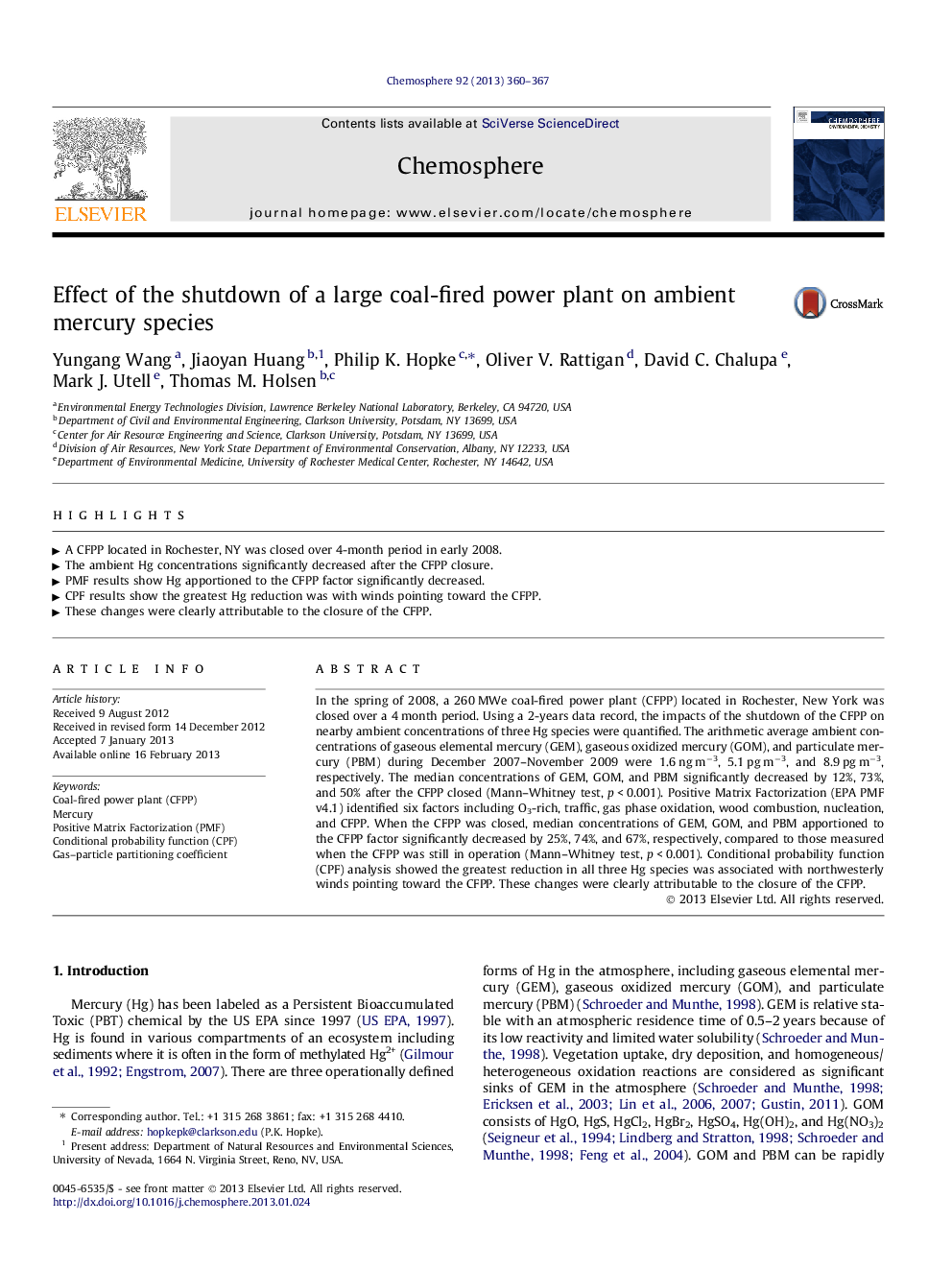| Article ID | Journal | Published Year | Pages | File Type |
|---|---|---|---|---|
| 6310397 | Chemosphere | 2013 | 8 Pages |
In the spring of 2008, a 260 MWe coal-fired power plant (CFPP) located in Rochester, New York was closed over a 4 month period. Using a 2-years data record, the impacts of the shutdown of the CFPP on nearby ambient concentrations of three Hg species were quantified. The arithmetic average ambient concentrations of gaseous elemental mercury (GEM), gaseous oxidized mercury (GOM), and particulate mercury (PBM) during December 2007-November 2009 were 1.6 ng mâ3, 5.1 pg mâ3, and 8.9 pg mâ3, respectively. The median concentrations of GEM, GOM, and PBM significantly decreased by 12%, 73%, and 50% after the CFPP closed (Mann-Whitney test, p < 0.001). Positive Matrix Factorization (EPA PMF v4.1) identified six factors including O3-rich, traffic, gas phase oxidation, wood combustion, nucleation, and CFPP. When the CFPP was closed, median concentrations of GEM, GOM, and PBM apportioned to the CFPP factor significantly decreased by 25%, 74%, and 67%, respectively, compared to those measured when the CFPP was still in operation (Mann-Whitney test, p < 0.001). Conditional probability function (CPF) analysis showed the greatest reduction in all three Hg species was associated with northwesterly winds pointing toward the CFPP. These changes were clearly attributable to the closure of the CFPP.
⺠A CFPP located in Rochester, NY was closed over 4-month period in early 2008. ⺠The ambient Hg concentrations significantly decreased after the CFPP closure. ⺠PMF results show Hg apportioned to the CFPP factor significantly decreased. ⺠CPF results show the greatest Hg reduction was with winds pointing toward the CFPP. ⺠These changes were clearly attributable to the closure of the CFPP.
